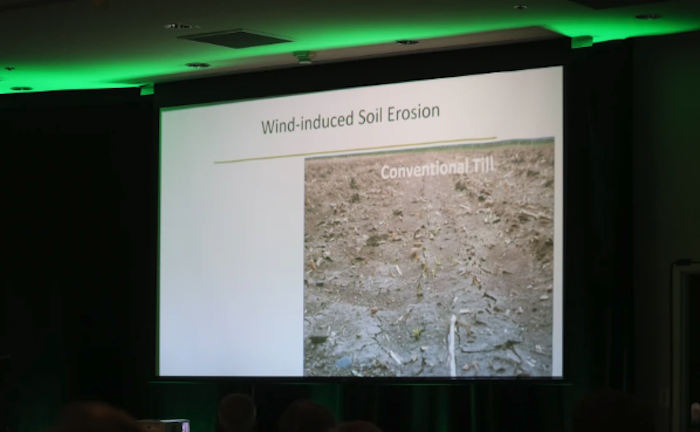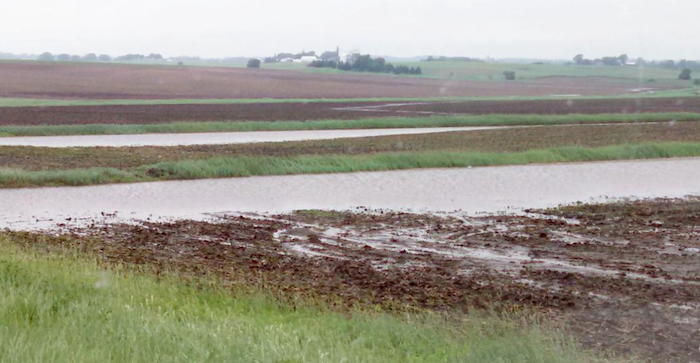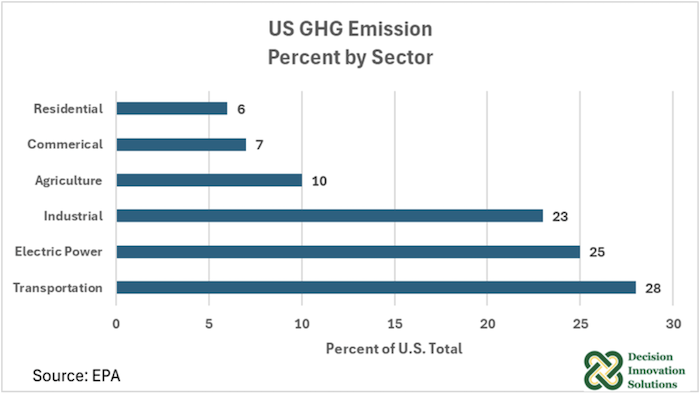Strip-Till Farmer editors encounter a variety of articles, social media posts, podcasts and videos that offer a unique look at the grower's world from the lofty digital realm. Here is our favorite content from the past week from across the web:
- Sugarbeet Industry Looks to a Future of Strip-Till
- Strip-Till Helps Farmer Handle Heavy Rain, Flooding
- Strip-Till Residue Helps Fight Waterhemp for Iowa Farmer
- Strategies for Fixing Strip-Till Compaction
- US Agriculture Cut Greenhouse Gas Emissions More Than Any Other Sector
Sugarbeet Industry Looks to a Future of Strip-Till
Ag Week breaks down the World Association of Beet and Cane Growers annual meeting, which featured conversations about wind damage to sugarbeets — a big reason why farmers are increasingly looking at strip-till as an option. Former Strip-Till Innovator Award recipients Brian Ryberg and Ryan and Melissa Shaw are strip-tilling sugarbeets.

A slide in USDA research leader Bart Stevens' presentation at the World Association of Beet and Cane Growers shows wind damage to sugarbeets — one of the reasons researchers and farmers are increasingly looking at strip till and no till systems. Photo taken June 20, 2024, in Fargo, North Dakota. Jenny Schlecht / Agweek
Strip-Till Helps Farmer Handle Heavy Rain, Flooding
It’s been a wet start to summer in southern Minnesota, as detailed by this Owatanna People’s Press article. 5th generation farmer Jim Purfeerst says his conservation practices are paying off in the challenging conditions. “Strip-till, no-till, vertical-till all make a huge impact, as far as soil loss,” Purfeerst says. They protect the soil to where it doesn’t erode. It really helps with the erosion aspect of things. And the government, through the EQIP (Environmental Quality Incentives Program) program, has helped a lot of basins and waterways get built. And the filter-strip program along the creek within our area, all really helps keep the water cleaner for us and eliminate some of the soil erosion that you’ve seen or that’s happening.”

A catch basin holds water up to 24 hours to prevent crops from being submerged and drowned. Photo: Jim Purfeerst
Strip-Till Residue Helps Fight Waterhemp for Iowa Farmer
Check out this video from Scarville, Iowa, strip-tiller Zack Smith. Waterhemp has emerged in his strip-tilled soybean rows, but not in the residue-covered soil between the rows. Smith discuss what this means for his herbicide plans moving forward.
Waterhemp in the context of strip till. pic.twitter.com/ka2rQWhsbD
— Stock Cropper (@zebulousprime) June 23, 2024
Strategies for Fixing Strip-Till Compaction
Here’s a podcast episode worth revisiting while you’re in the cab, on the road, or up early one morning during your family vacation. Axtell, Neb., strip-tiller Ty Fickenscher joined Ag PHD to discuss strip-till fertility, equipment and strategies for managing compaction. Fickenscher will also be participating in a panel discussion at the 2024 National Strip-Tillage Conference, Aug. 8-9 in Madison, Wis. Head to StripTillConference.com for more information!
US Agriculture Cut Greenhouse Gas Emissions More Than Any Other Sector
Agriculture is sometimes a target among those looking for somewhere to place blame for greenhouse gas emissions. However, recent research from the Environmental Protection Agency (EPA) shows that agriculture has made more progress in cutting emissions than any other industry in the US. According to the report, “Inventory of US Greenhouse Gas Emissions and Sinks: 1990-2022”, US greenhouse gas emissions increased from 2021 to 2022 by +1.3% but agricultural emissions dropped -1.8%.
Is there something you want to share in "This Week"? Send us an email.








